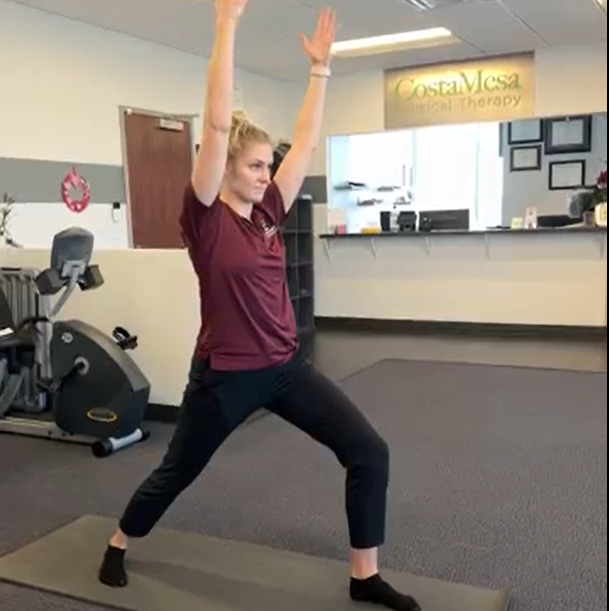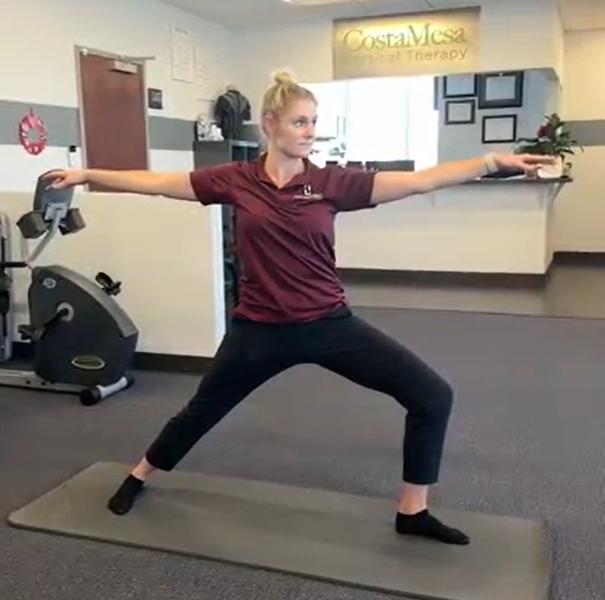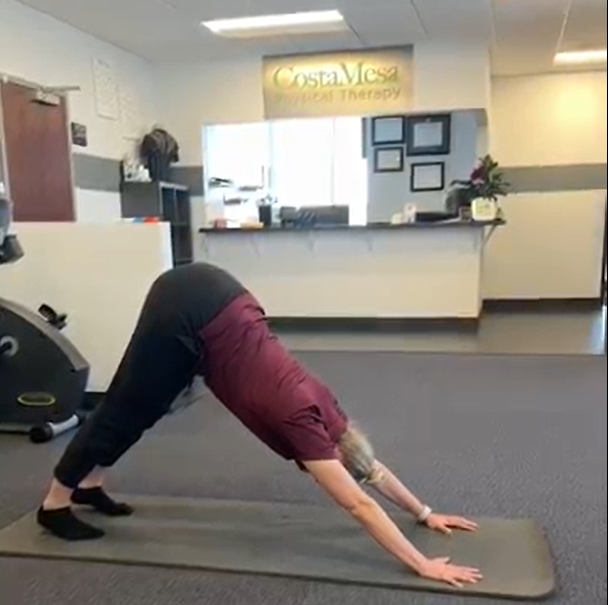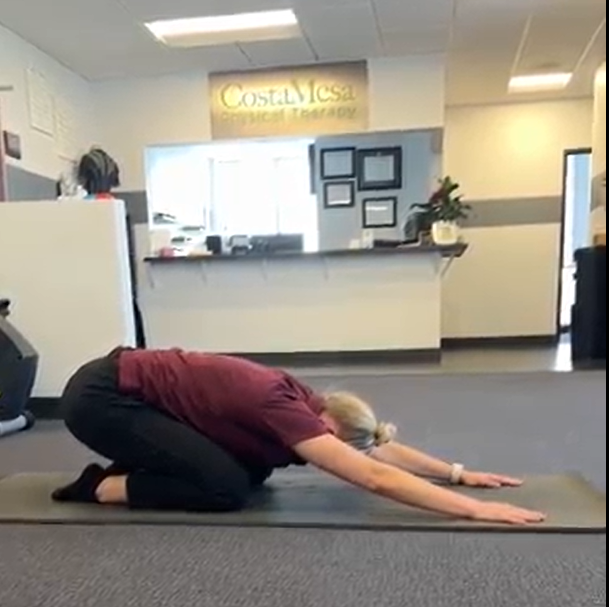Yoga and Physical Therapy: A Beginner’s Guide to Wellness
In a world where stress and tension seem to be constant companions, finding moments of peace and tranquility can feel like a luxury. This is where yoga and physical therapy comes in, offering a holistic approach to both physical and mental well-being. Whether you’re a seasoned practitioner or a curious beginner, yoga holds something for everyone.
What is Yoga?
Yoga, an ancient practice originating from India, encompasses various physical, mental, and spiritual disciplines aimed at achieving harmony and balance within oneself. While it’s often associated with physical postures or “asanas,” yoga extends far beyond mere exercise. It integrates breathing techniques, meditation, and philosophical principles to promote overall health and well-being.
Yoga and Physical Therapy: A Complementary Approach
Physical therapy and yoga share common goals of improving mobility, reducing pain, and enhancing overall well-being. Integrating yoga into a physical therapy regimen can complement traditional treatment methods by addressing not only the physical symptoms but also the mental and emotional aspects of healing. Yoga’s emphasis on gentle movement, breath awareness, and mindfulness aligns well with the principles of rehabilitation, offering patients a holistic approach to recovery.
Physical therapy and yoga can complement each other wonderfully, offering a holistic approach to healing, rehabilitation, and overall well-being.
Here are several ways in which physical therapy and yoga practices can work together synergistically:
- Comprehensive Assessment: Physical therapists assess patients’ physical conditions, identifying areas of weakness, imbalance, or injury. They develop personalized treatment plans to address these issues. Yoga instructors can complement this assessment by evaluating movement patterns, posture, and alignment, offering insights into how yoga practice can support physical therapy goals.
- Targeted Exercise Prescription: Physical therapists prescribe specific exercises and techniques to improve strength, flexibility, and mobility based on individual needs. Yoga poses and sequences can be tailored to complement these exercises, targeting areas of weakness or restriction identified during physical therapy sessions.
- Functional Movement Training: Physical therapy often focuses on improving functional movements for daily activities and sports-specific tasks. Yoga incorporates functional movement patterns that mimic real-life activities, such as bending, twisting, reaching, and lifting. Integrating yoga poses that mirror these movements can reinforce the progress made in physical therapy and enhance overall functional capacity.
- Balance and Stability Training: Many physical therapy interventions aim to improve balance and stability, especially important for fall prevention and injury recovery. Yoga poses challenge your balance and proprioception, encouraging greater body awareness and control. Incorporating balancing poses into a yoga practice can complement balance training in physical therapy, improving stability and reducing the risk of falls.
- Mind-Body Connection: Both physical therapy and yoga emphasize the mind-body connection, recognizing the interplay between physical health, mental well-being, and emotional resilience. Yoga practices, such as breathwork, meditation, and mindfulness, can enhance relaxation, stress management, and pain modulation, augmenting the therapeutic benefits of physical therapy.
- Pain Management and Rehabilitation: Yoga offers gentle, low-impact movement and stretching that can support pain management and rehabilitation efforts. Integrating yoga into a comprehensive pain management plan can help reduce muscle tension, improve joint mobility, and promote overall relaxation, complementing the therapeutic modalities used in physical therapy.
- Long-Term Wellness Maintenance: Once patients complete their physical therapy programs, maintaining gains in strength, flexibility, and mobility is essential for long-term health and well-being. Yoga provides a sustainable and accessible means of continuing to support these goals, empowering individuals to take an active role in their ongoing self-care and rehabilitation.
By integrating yoga and physical therapy practices, patients can benefit from a holistic approach to health and wellness that addresses not only the physical aspects of rehabilitation but also the mental, emotional, and spiritual dimensions of healing. Collaborative efforts between physical therapists and yoga instructors can provide.
Follow along as our DPT Hana shows you how to do this short beginner yoga flow to get you moving and feeling stronger.
Warrior I (Virabhadrasana I): From a standing position, step one foot back, keeping hips squared forward. Bend front knee to a 90-degree angle, ensuring knee aligns with ankle. Extend arms overhead, palms facing each other. Press feet into the floor and reach through fingertips, lifting the chest. Hold for 5 seconds

Warrior II (Virabhadrasana I): From a Warrior I position, separate your extend arms overhead, bringing your right arm forward and your left arm back. Keep your feet pressed to the ground and reach through fingertips, expanding the chest. Hold for 5 seconds.

Downward-Facing Dog (Adho Mukha Svanasana): From a Warrior II position, bring your arms to the front and hands down to the floor, then bring both legs back, tuck toes under, and lift hips towards the ceiling, forming an inverted V shape with your body. Keep hands shoulder-width apart and feet hip-width apart. Press palms into the ground and lengthen through the spine. Hold for 5 seconds

Child’s Pose (Balasana): From the Downward Dog position, bring your knees down to a kneeling position on the floor, sit back on your heels, and fold forward, reaching arms out in front or alongside the body. Rest your forehead on the ground and relax your shoulders. Breathe deeply, allowing the spine to lengthen and the hips to gently open. Hold for 5 seconds and END

Yoga Equipment
One of the beauties of yoga is its accessibility. While certain props like yoga mats, blocks, and straps can enhance your practice, they’re not mandatory for beginners. A comfortable mat provides cushioning and grip, while blocks and straps aid in modifying poses to accommodate different body types and abilities.
Who Can Benefit from Doing Yoga?
Yoga is truly inclusive, catering to individuals of all ages, fitness levels, and backgrounds. Whether you’re seeking physical strength and flexibility, stress relief, mental clarity, or spiritual connection, yoga offers something for everyone. Pregnant women, seniors, athletes, office workers, and those recovering from injuries can all benefit from the practice.
The Benefits of Yoga
The benefits of yoga extend far beyond the physical realm. Here are some of the key advantages:
- Improved Flexibility and Strength: Yoga postures gently stretch and strengthen muscles, promoting flexibility and mobility.
- Stress Reduction: Mindful breathing and meditation techniques calm the nervous system, reducing stress and anxiety levels.
- Enhanced Mental Clarity: Yoga cultivates mindfulness and awareness, helping to quiet the mind and improve concentration.
- Better Posture and Alignment: Practicing yoga improves posture by strengthening core muscles and increasing body awareness.
- Increased Energy and Vitality: Regular practice boosts circulation, oxygenating the body and invigorating the mind.
Yoga Exercises: Five Beginner Yoga Positions to Try
If you’re looking to start your yoga journey, we’re also sharing these five beginner yoga positions you can try in the comfort of your own home.
- Mountain Pose (Tadasana): Stand tall with feet hip-width apart, arms relaxed by your sides. Press feet firmly into the ground, engage thigh muscles, and lengthen your spine. Take deep breaths, drawing energy up through the body. This pose helps improve posture and awareness of body alignment.
- Downward-Facing Dog (Adho Mukha Svanasana): Start on your hands and knees, tuck toes under, and lift hips towards the ceiling, forming an inverted V shape with your body. Keep hands shoulder-width apart and feet hip-width apart. Press palms into the ground and lengthen through the spine. This pose stretches the entire body, especially the back, hamstrings, and shoulders.
- Child’s Pose (Balasana): Kneel on the floor, sit back on your heels, and fold forward, reaching arms out in front or alongside the body. Rest forehead on the ground and relax shoulders. Breathe deeply, allowing the spine to lengthen and the hips to gently open. Child’s Pose is a calming posture that stretches the back, hips, and thighs.
- Warrior I (Virabhadrasana I): From a standing position, step one foot back, keeping hips squared forward. Bend front knee to a 90-degree angle, ensuring knee aligns with ankle. Extend arms overhead, palms facing each other. Press into the feet and reach through fingertips, lifting the chest. Warrior I strengthens legs, opens hips, and improves balance.
- Corpse Pose (Savasana): Lie on your back with arms and legs extended, palms facing up. Close your eyes and relax every muscle in the body. Focus on slow, deep breathing, letting go of tension with each exhale. Corpse Pose promotes deep relaxation and helps integrate the benefits of the practice.
Couples Yoga Poses
Couples yoga flow can promote connection, trust, and communication between partners. Remember to communicate with your partner throughout the practice, adjust poses as needed for comfort and safety, and most importantly, have fun together!
Find a comfortable space with enough room for both partners to move freely.
Begin by sitting facing each other, cross-legged, and take a few moments to synchronize your breath. Close your eyes and connect with your partner’s energy.
- Partner Seated Forward Fold: Sit facing each other with legs extended. Hold hands and gently lean forward, keeping backs straight. Use each other’s support to deepen the stretch in the hamstrings and lower back. Hold for 5-7 breaths, then release.
- Partner Seated Twist: Sit cross-legged facing each other. Place right hand on partner’s opposite knee and left hand on each other’s backs. Inhale to lengthen the spine, exhale to twist gently towards each other. Hold for 3-5 breaths, then switch sides.
- Double Downward Dog: Stand facing each other, a few feet apart. Both partners come into Downward-Facing Dog pose, walking feet back until arms are straight and hips are lifted. Hold hands and press into the ground, creating a stable base. Hold for 3-5 breaths, then release.
- Partner Boat Pose: Sit facing each other with knees bent and feet touching. Hold hands and lift legs, balancing on sitting bones. Keep spines straight and core engaged. Option to straighten legs for a deeper challenge. Hold for 3-5 breaths, then release.
- Partner Tree Pose: Stand side by side, facing the same direction. Place outer foot against inner thigh or calf for support, avoiding the knee. Press palms together at heart center or extend arms overhead for a deeper stretch. Find a focal point to balance and support each other. Hold for 3-5 breaths, then switch sides.
- Partner Supported Forward Fold: Stand facing each other, holding hands. Step back with one foot and lean forward, allowing partner to support your weight. Keep legs straight or slightly bent as needed. Feel the stretch in the back of the legs and spine. Hold for 5-7 breaths, then switch sides.
- Seated Cat-Cow: Sit cross-legged facing each other, with a comfortable distance between partners. Sit up tall, and reach out to hold hands. To flow between Seated Cow and Seated Cat poses with your partner, moving with the breath, Inhale to lift into Seated Cow, expanding the front body and reaching forward. Exhale to round into Seated Cat, drawing the belly in and rounding the spine while reaching around to each other’s backs. Repeat this flowing movement for several breath cycles, allowing each inhale to lift you into expansion and each exhale to deepen into contraction.
- Partner Acro Yogi Throne (Advanced): Partner A sits on the ground with knees bent and feet flat, leaning back slightly with hands behind them for support. Partner B stands facing Partner A and gently lifts their feet, placing Partner A’s ankles on their shoulders. Partner A extends arms overhead and leans back, engaging core muscles and opening chest. Partner B supports Partner A’s weight with hands on their waist or lower back. Hold for 5-7 breaths, then switch roles.
- Partner Seated Meditation: Sit cross-legged facing each other, close enough to touch knees. Rest hands on partner’s knees or hold hands. Close your eyes and take a few moments to breathe together, feeling the connection between you. Set an intention for your practice or simply enjoy the moment of togetherness.
End the practice with a moment of gratitude for your partner and the shared experience. Take time to communicate any thoughts or feelings that arose during the practice, and express appreciation for each other’s presence and support. This couples yoga flow can be repeated as often as desired, deepening the bond between partners both on and off the mat.
In conclusion, yoga is more than just a series of physical postures; it’s a transformative practice that nurtures the body, mind, and spirit. By exploring beginner yoga positions, investing in minimal equipment, and embracing the multitude of benefits, individuals can embark on a journey of self-discovery and holistic wellness. Whether practiced alone or in conjunction with other modalities like physical therapy, yoga has the power to cultivate balance, resilience, and inner peace in our lives.
GET IN TOUCH
Schedule a Visit
You may also be interested in these articles:
- The Ultimate Guide to Workout Recovery Methods: From Stretching to Air Compression Therapy
- Stronger Together: Maximizing Health with Physical Therapy and Therapeutic Massage
- Runners Knee Causes, Symptoms, Risk Factors and Treatment
- Yoga and Physical Therapy: A Beginner’s Guide to Wellness
- Optimizing Athletic Recovery: A Comprehensive Lower Body Stretch Routine for Post-Game Success

